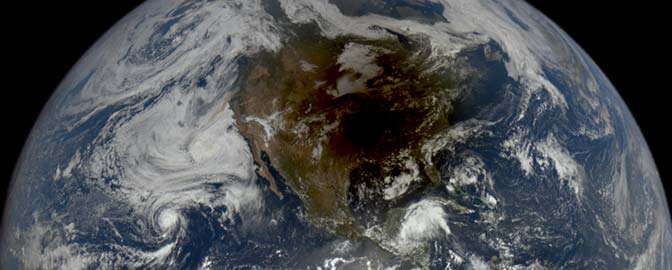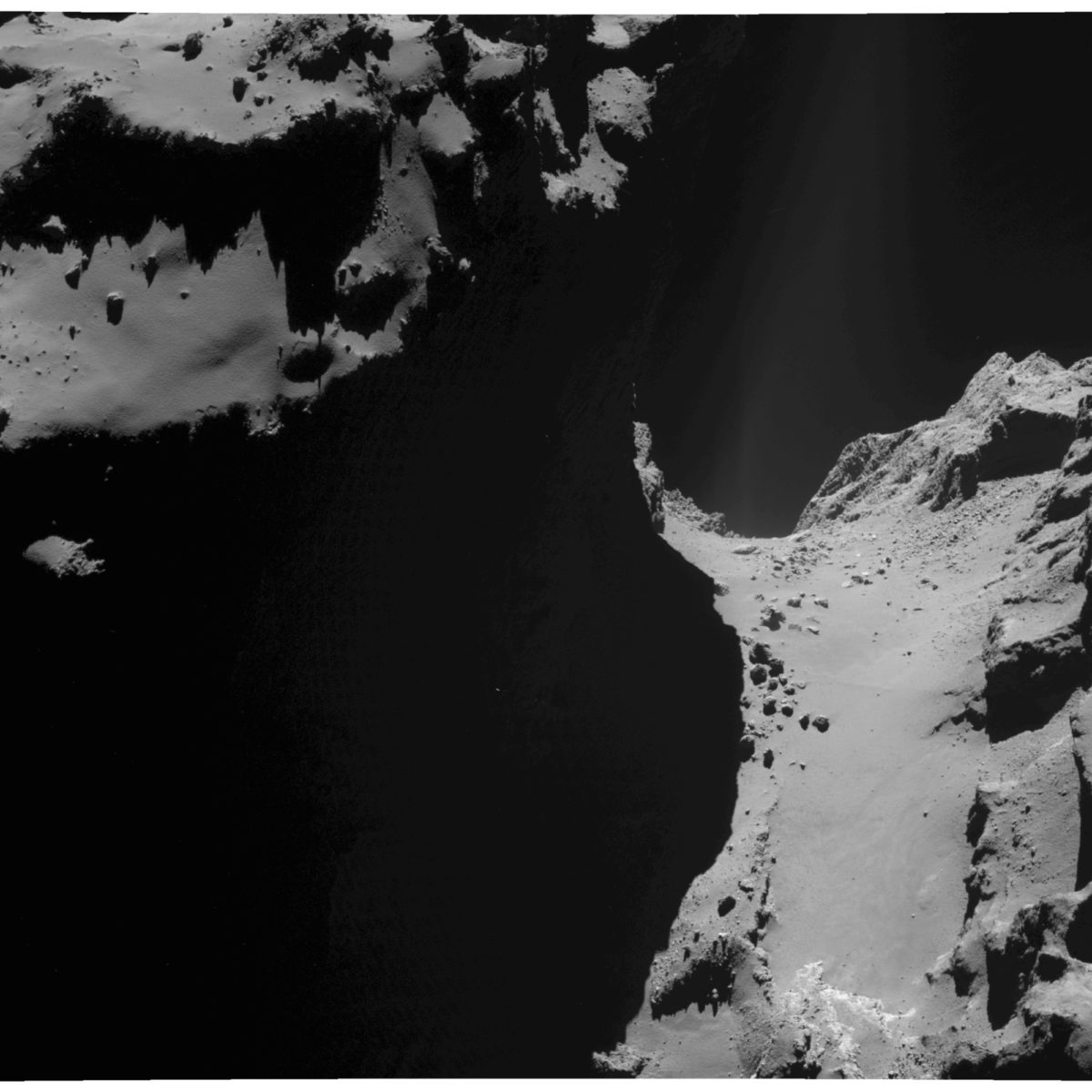Emily Lakdawalla • Oct 27, 2014
A feast of comet features from Rosetta at Churyumov-Gerasimenko
I have been horribly behind in posting images from Rosetta's exploration of comet 67P/Churyumov-Gerasimenko, and that's a shame, because the spacecraft has lately been exploring the comet from a range of only 10 kilometers. From that range, the NavCam gets sub-meter resolution, and we're seeing a menagerie of odd surface features. Some of them are odd because I haven't seen anything like them anywhere else, like the crustily walled circular pits in this photo:
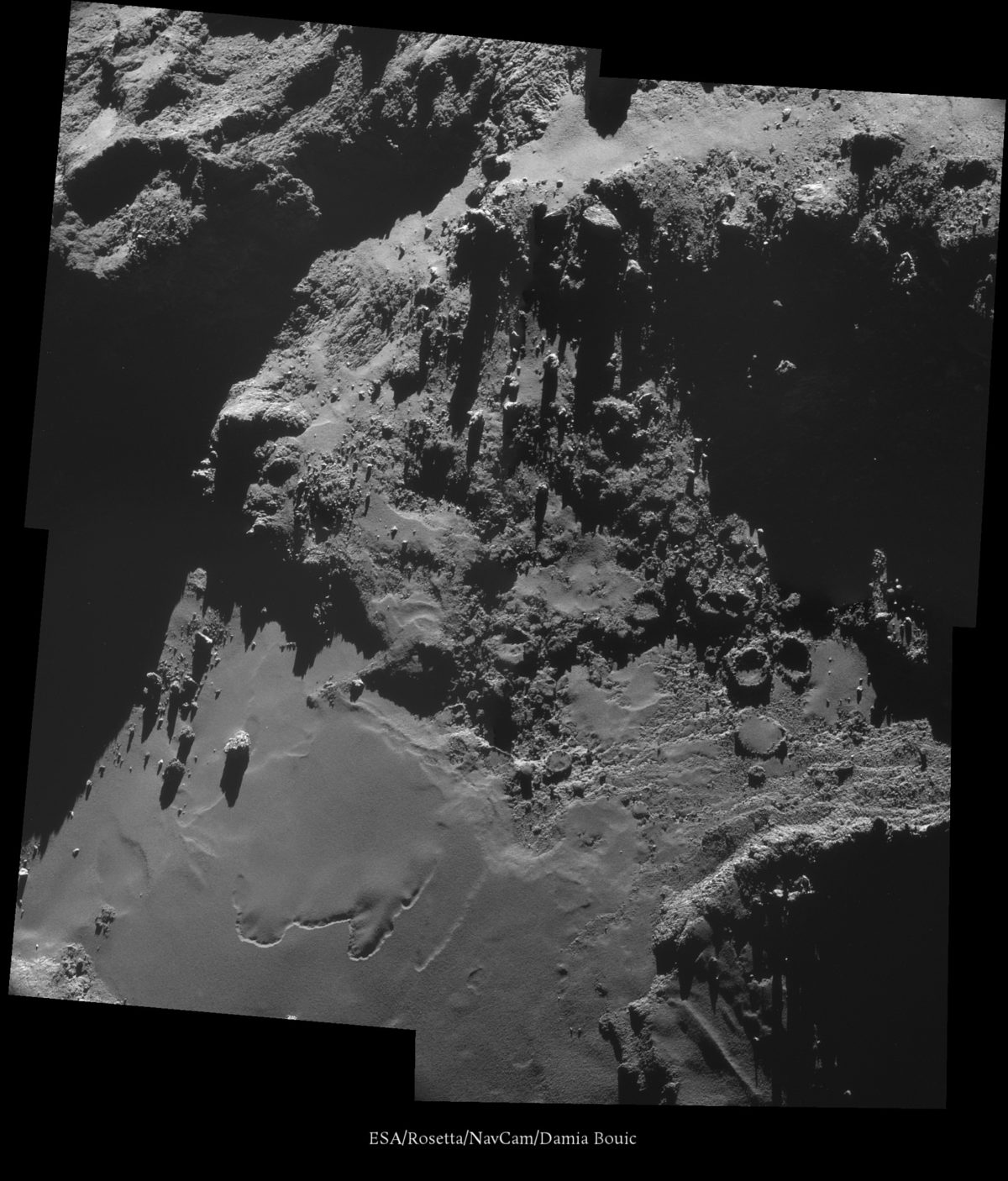
Other features are odd because they look familiar and yet have no right being on a comet. I've called them "rhythmic ridges" in the caption to the image below, but to pretty much everyone who looks at them, they look like sand dunes. Which are just plain impossible on a body that has neither atmosphere nor much of any gravity.
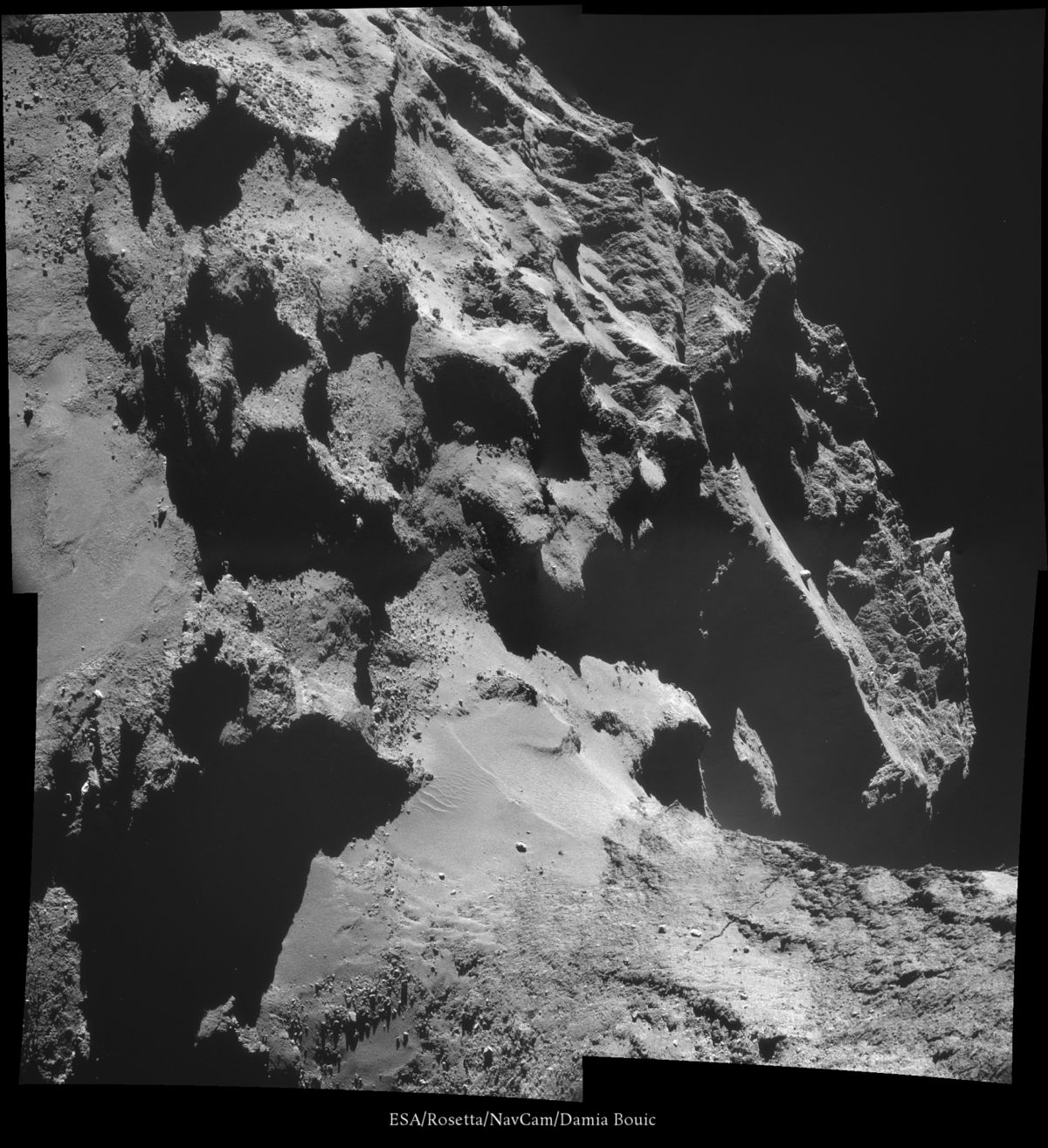
I called them "rhythmic ridges" because to call them dunes -- even if we all know that they couldn't have formed from wind or water saltating sand grains across a plain -- is to imply a cause. When you encounter unfamiliar worlds, it's all too easy to name things with terms that imply a cause and then fall into the linguistic trap that that sets up for you. It's how we got to seeing water in the "canali" on Mars. Of course, trying to avoid these pitfalls can give us really horrible names for geomorphic features, like the "recurring slope lineae" on Mars. "Canali" sounds so much more poetic.
Call them what you will, repeating ridges or "dunes" -- they show up in this gorgeous image, too. Also, I can't get over how well we can see into the shadowed areas with the light reflected off of the sunlit areas.
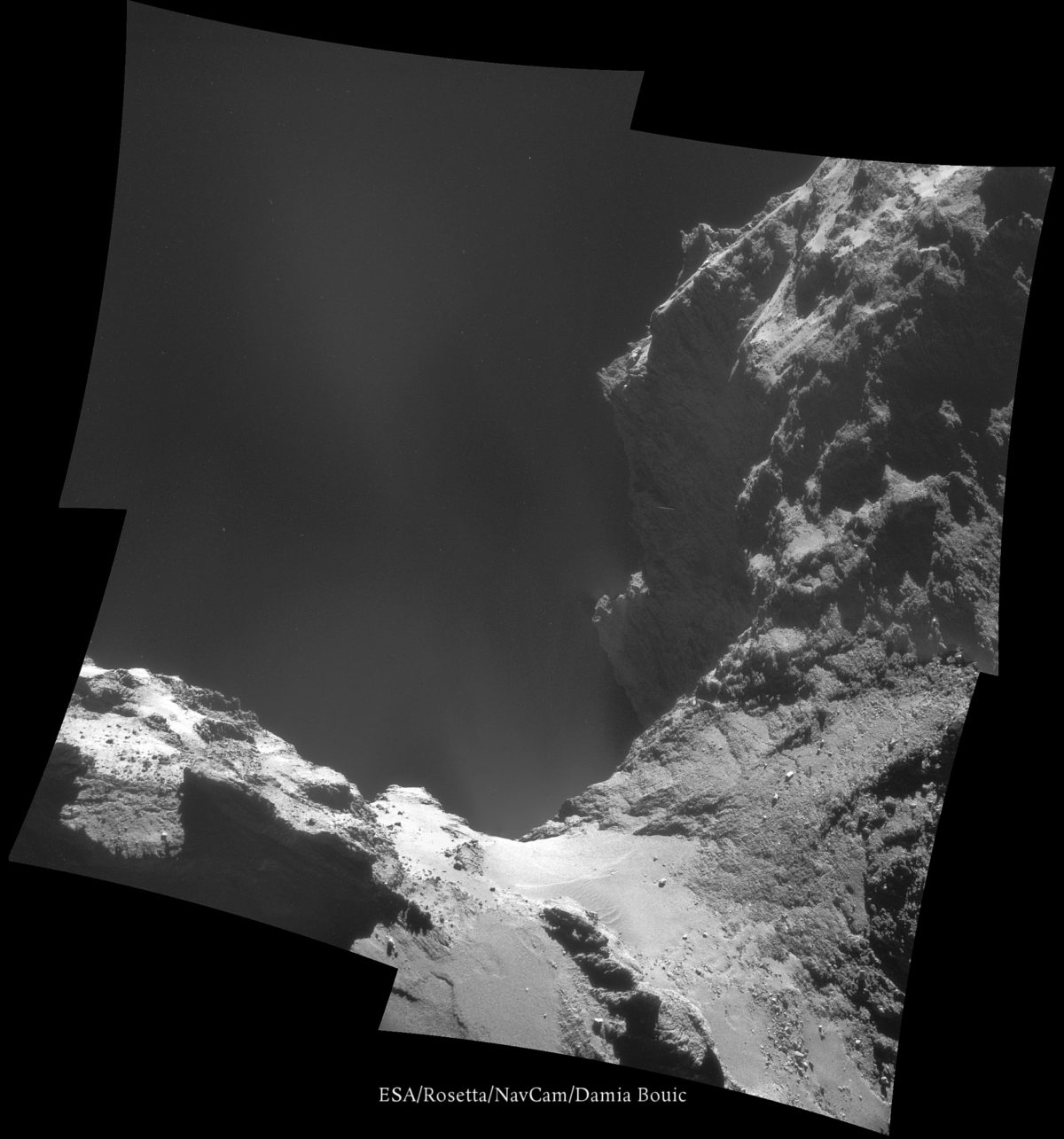
This view shows the comet in a different, softer mood. Views like this make you think the comet is covered with softly drifting snow; it's all too easy to forget that the surface of this comet is as dark as coal. Which is why I'm grateful to Claudia Mignone for explaining how a coal-black comet can look so bright and snowy in Rosetta photos.
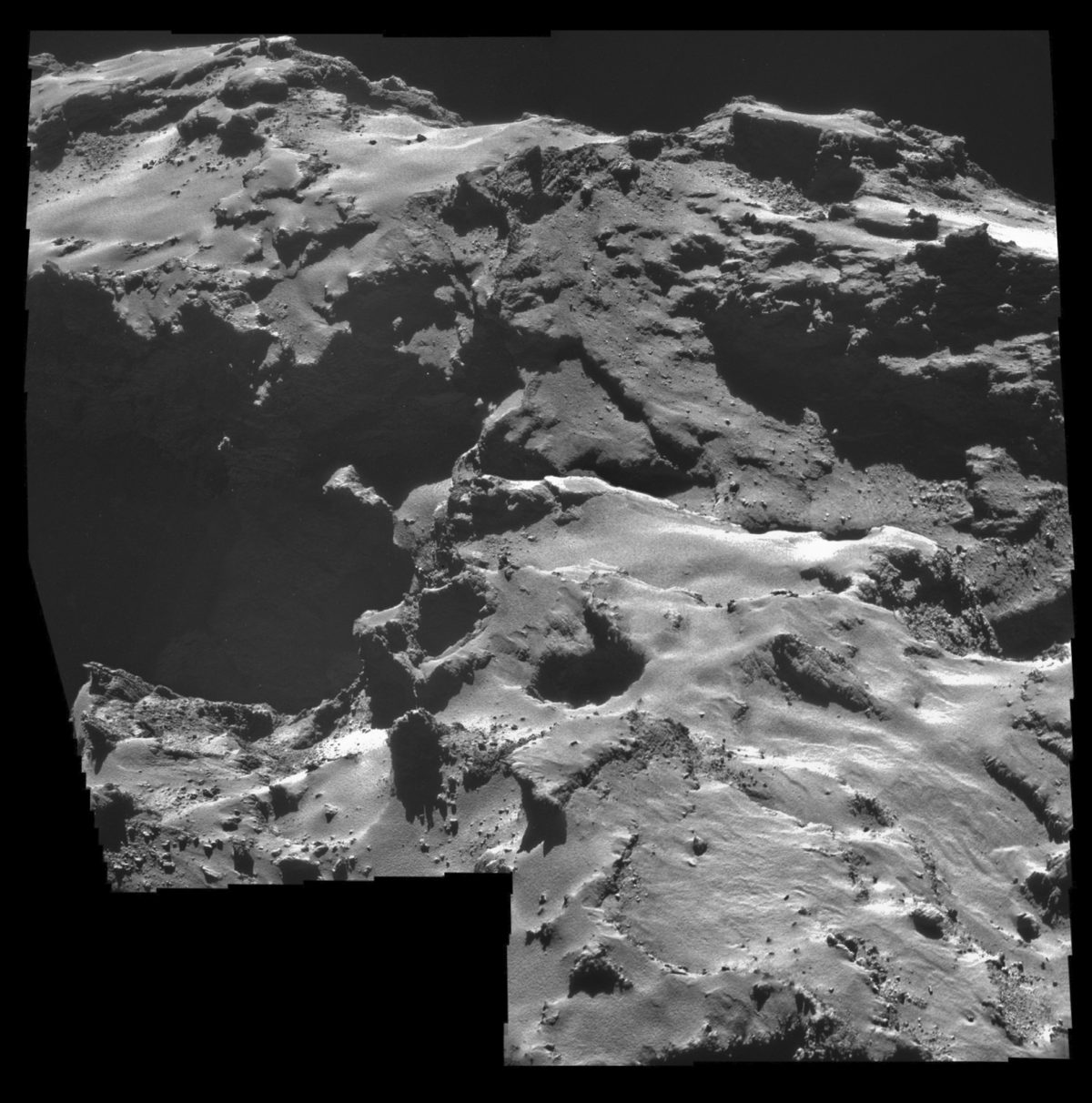
They released a couple of images from the OSIRIS science camera recently, all from the wide-angle camera, so we're not yet seeing to the teeny scales that the science team is enjoying. I love this long-exposure one that shows collimated jets erupting in all different directions. It was taken six weeks ago -- I know the comet is much more active than this now.
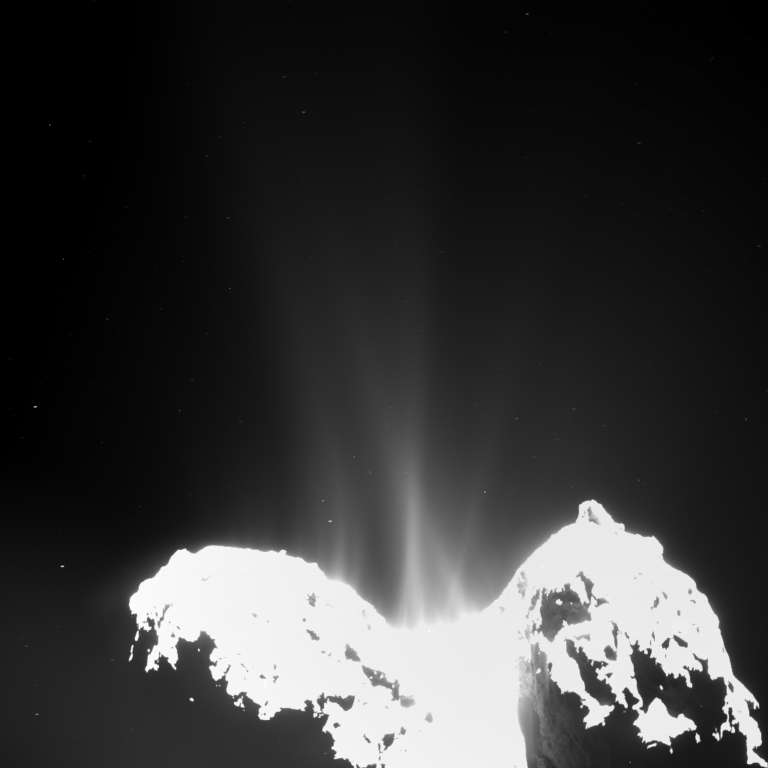
Here's a closeup OSIRIS image of more recent jet activity; you can slide back and forth between two different exposure settings, a short one to see surface features and a long one for jets and darker areas.
I'm intrigued by the relatively bright-colored scarps along the neck in the shorter-exposure photo. They look like they might actually be a different color than the surrounding areas -- though it's hard to tell. It could just be a trick of the light. I cannot wait to see color images from OSIRIS. They've held all those close to the vest -- we may have to wait until the data get released to ESA's Planetary Science Archive to see them.
Finally, here is a photo that's not from the Rosetta team; it's work by space artist Michael Carroll, to give you a sense of the size of the comet. Enjoy this comparison of Churyumov-Gerasimenko and Mount Fuji. Thanks to Mikey's imagination, we get a sense of what the comet might look like in color:
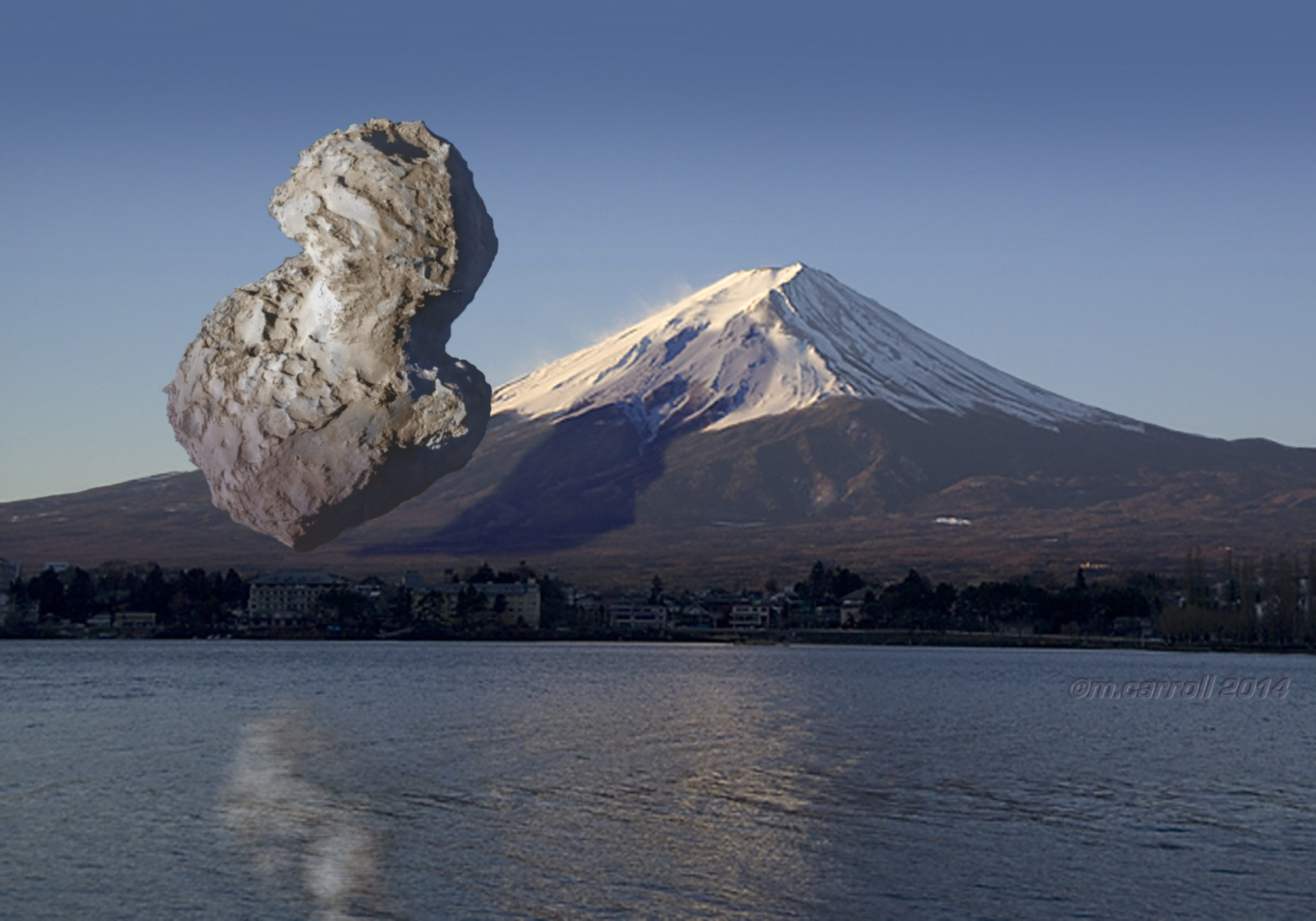
The landing is in only two weeks, and I'll be in Darmstadt to report it! Stay tuned for news!
Let’s Go Beyond The Horizon
Every success in space exploration is the result of the community of space enthusiasts, like you, who believe it is important. You can help usher in the next great era of space exploration with your gift today.
Donate Today

 Explore Worlds
Explore Worlds Find Life
Find Life Defend Earth
Defend Earth